Engaged participants made the Indian River Lagoon Report Card workshop a pleasure to facilitate!
Caroline Donovan ·On Thursday, January 21 and Friday, January 22, 2016, IAN staff facilitated the kickoff workshop for an Indian River Lagoon report card. The Lagoon is located on the east coast of Florida, stretching from above Cape Canaveral south all the way to Stuart, where the St. Lucie River meets the Lagoon and flows out into the Atlantic Ocean.

Our workshop was held at the Marine Resource Council’s Lagoon House in Palm Bay, FL. The Marine Resource Council is spearheading the report card project, with numerous other partners that are participating in a variety of ways. The Council has led the charge in finding funding for the project, for rallying together support behind the workshop effort, and for inviting and engaging all the participants to the workshop. With over 50 people in attendance, we accomplished a lot!

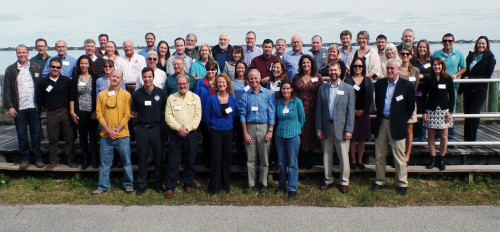
Here at IAN, we love to facilitate the kickoff workshop for any project of ours. But, the exciting part of this workshop was how engaged the participants were in the entire process and how enthusiastic they were to produce a product that will help drive restoration of the Lagoon in the future.
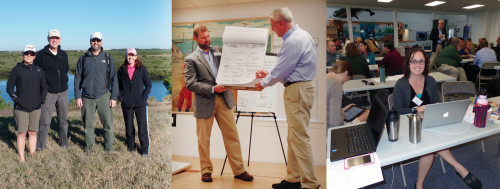

The workshop was structured to draw out participation in several different ways. First, we immediately asked participants to get into small groups and “grade” the lagoon based on their expert opinion and gut reaction. That was a good icebreaker to get everyone talking about what it really means to get an A, B, or F, and to find out if they agreed or disagreed with their colleagues! Next, we broke out the entire group into four categories – water quality and hydrology; habitat and benthics; fish and shellfish; and wildlife – so that experts in their field could talk with their colleagues about key pressures and threats to the ecosystem based on their specialty. What are the key pressures and threats in relation to water quality and freshwater flow? How are fish and shellfish affected in the Lagoon? These kinds of questions elicit a lot of discussion and result in a shared vision of what is happening in and around the Lagoon.
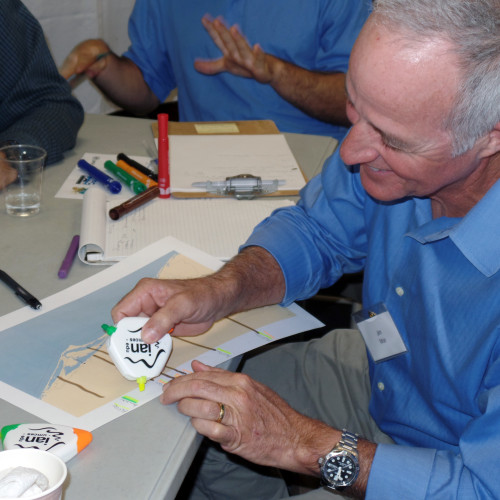
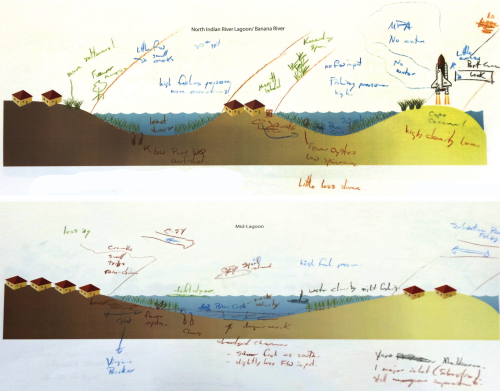
After going through the exercise of talking about key pressures and features of the Lagoon, the same breakout groups discussed potential indicators, available data, and future analyses of those data. The majority of the second day was these immersive sessions where participants talked in detail about their expertise. The results from these breakout sessions are the starting point from which the report card data can be analyzed; we have a good foundation that’s based on quality data and science from which to move forward on scoring and grading the Lagoon.

At the end of the workshop, we always wrap up with a storyboarding exercise that helps illustrate to the participants that the product coming out of the workshop is theirs. We need their buy-in and review of all the nitty gritty details so that they can hold up the end product and talk to the public and to legislators about the Indian River Lagoon report card. Again, the amount of participation and interest from the participants were exemplary, even at the end of a two-day, intensive workshop. While the breakout sessions were the foundation from which the report card will be generated, the storyboarding exercise is the documentation that we are moving forward on this path toward an Indian River report card and ultimately toward a restored Lagoon.

About the author
Caroline Donovan
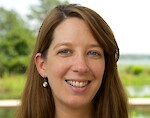
Ms. Caroline Donovan oversees program and project management, science communication, and data analysis at UMCES-IAN. She has over 15 years of experience with ecosystem health report cards, science communication products, stakeholder engagement, and citizen science and volunteer monitoring. Ms. Donovan has worked extensively in the fields of science integration and communication, facilitation, and program management and administration. Ms. Donovan received a Bachelor of Science in Biology from University of North Carolina - Wilmington in 2002 and a Master of Science in Biological Oceanography from University of Maryland - College Park in 2005.

